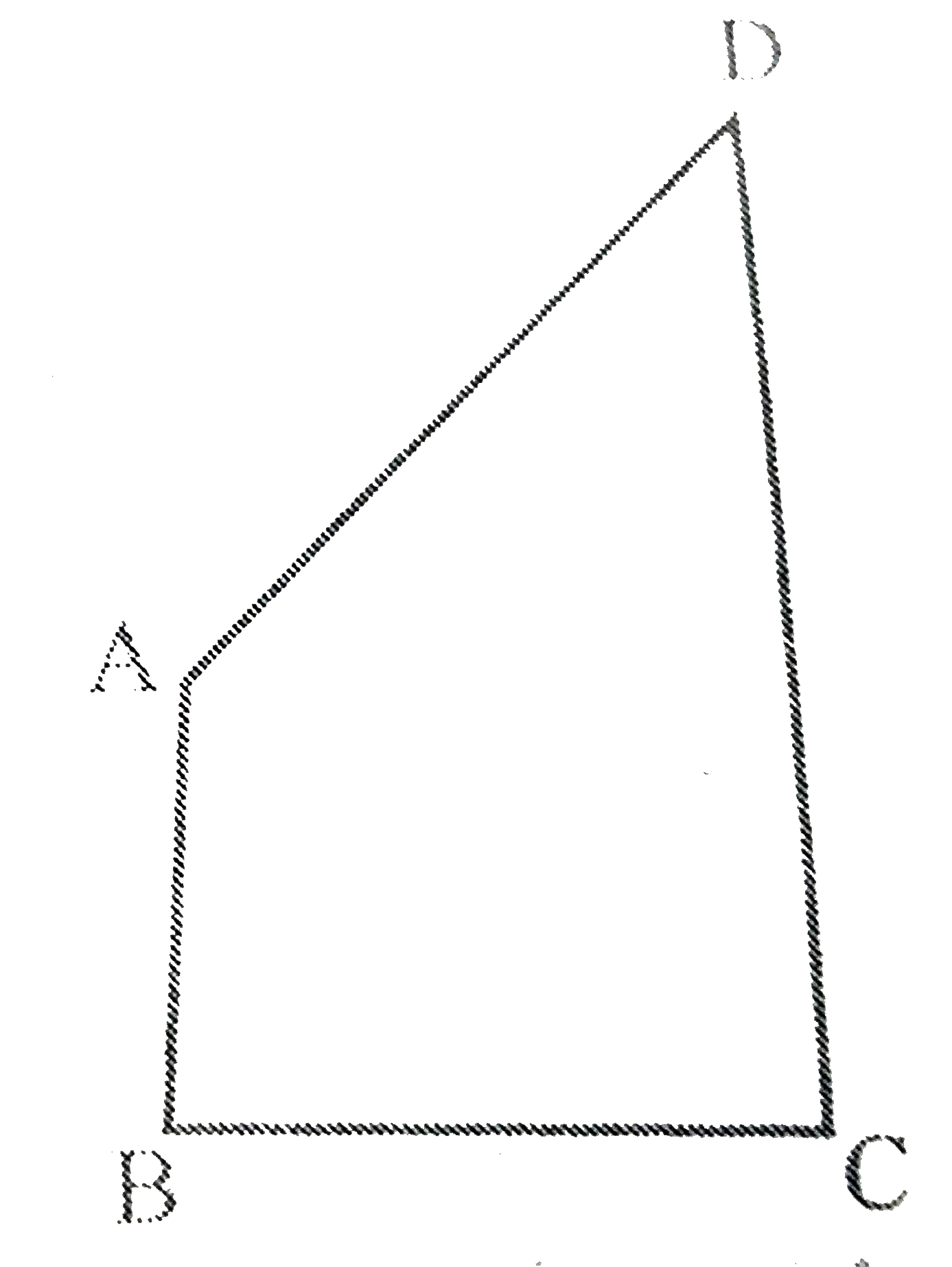In Figure, AB and CD are respectively the smallest and longest sides of a quadrilateral ABCD. Show that ∠A>∠C and ∠B>∠D
To show that in quadrilateral ABCD, the angles satisfy ∠A>∠C and ∠B>∠D, we can follow these steps:
Step 1: Identify the sides and angles
Given that AB is the shortest side and CD is the longest side of the quadrilateral ABCD, we denote the angles opposite to these sides as follows:
- ∠A is opposite to side CD
- ∠C is opposite to side AB
- ∠B is opposite to side AD
- ∠D is opposite to side BC
Step 2: Construct diagonals
We will draw the diagonals AC and BD in the quadrilateral ABCD. This creates four triangles: △ABC, △ACD, △ABD, and △BCD.
Step 3: Analyze triangle ABC
In triangle ABC:
- We know BC>AB (since AB is the shortest side).
- By the property of triangles, the angle opposite the longer side is greater than the angle opposite the shorter side. Thus, we have:
∠A>∠C
This is our first inequality.
Step 4: Analyze triangle ACD
In triangle ACD:
- We know CD>AD (since CD is the longest side).
- Again, applying the property of triangles, we find:
∠D>∠A
This gives us our second inequality.
Step 5: Analyze triangle ABD
In triangle ABD:
- We know AD>AB (since AB is the shortest side).
- Thus, we have:
∠B>∠D
This is our third inequality.
Step 6: Analyze triangle BCD
In triangle BCD:
- We know CD>BC (since CD is the longest side).
- Therefore, we conclude:
∠C>∠B
This gives us our fourth inequality.
Step 7: Combine results
From the inequalities derived:
1. ∠A>∠C
2. ∠B>∠D
Thus, we have shown that:
∠A>∠Cand∠B>∠D
Conclusion
We have successfully demonstrated that in quadrilateral ABCD, the angles satisfy ∠A>∠C and ∠B>∠D.
---
Given that AB is the shortest side and CD is the longest side of the quadrilateral ABCD, we denote the angles opposite to these sides as follows:
- ∠A is opposite to side CD
- ∠C is opposite to side AB
- ∠B is opposite to side AD
- ∠D is opposite to side BC
We will draw the diagonals AC and BD in the quadrilateral ABCD. This creates four triangles: △ABC, △ACD, △ABD, and △BCD.
In triangle ABC:
- We know BC>AB (since AB is the shortest side).
- By the property of triangles, the angle opposite the longer side is greater than the angle opposite the shorter side. Thus, we have:
∠A>∠C
This is our first inequality.
In triangle ACD:
- We know CD>AD (since CD is the longest side).
- Again, applying the property of triangles, we find:
∠D>∠A
This gives us our second inequality.
In triangle ABD:
- We know AD>AB (since AB is the shortest side).
- Thus, we have:
∠B>∠D
This is our third inequality.
In triangle BCD:
- We know CD>BC (since CD is the longest side).
- Therefore, we conclude:
∠C>∠B
This gives us our fourth inequality.
From the inequalities derived:
1. ∠A>∠C
2. ∠B>∠D
∠A>∠Cand∠B>∠D
We have successfully demonstrated that in quadrilateral ABCD, the angles satisfy ∠A>∠C and ∠B>∠D.
Topper's Solved these Questions
Similar Questions
In Figure, AB and CD are respectively the smallest and longest sides of a quadrilateral ABCD. Show that ∠A>∠C and ∠B>∠D.
View SolutionABandCD are respectively the smallest and longest sides of a quadrilateral ABCD (see Fig. 7.50). Show that ∠A>∠C and ∠B>∠D.

View SolutionIn Figure, ABC and DBC are two triangles on the same base BC such that AB=AC and DB=DC. Prove that ∠ABD=∠ACD
View SolutionIn Figure, AB=AC and ∠ACD=1000, find ∠BAC
View SolutionIn the given figure, AD and CF are respectively perpendiculars to sides BC and AB of ABC. if ∠FCD=500, find ∠BAD.
View SolutionIn Figure, ABC and DBC are two isosceles triangles on the same base BC such that AB=AC and DB=CD. Prove that ∠ABD= ∠ACD
View SolutionIn Figure, AB=AC and ∠ACD=1200. Find ∠A
View SolutionIf ABCD is a quadrilateral in which ABCD and AD=BC, prove that ∠A =∠B .
View SolutionIn Figure, AB||CF and BC||ED . Prove that ∠ABC= ∠FDE
View SolutionIf Figure, arms BA and BC of ∠ABC are respectively parallel to arms ED and EF of ∠DEF . Prove that ∠ABC=∠DEF.
View Solution
